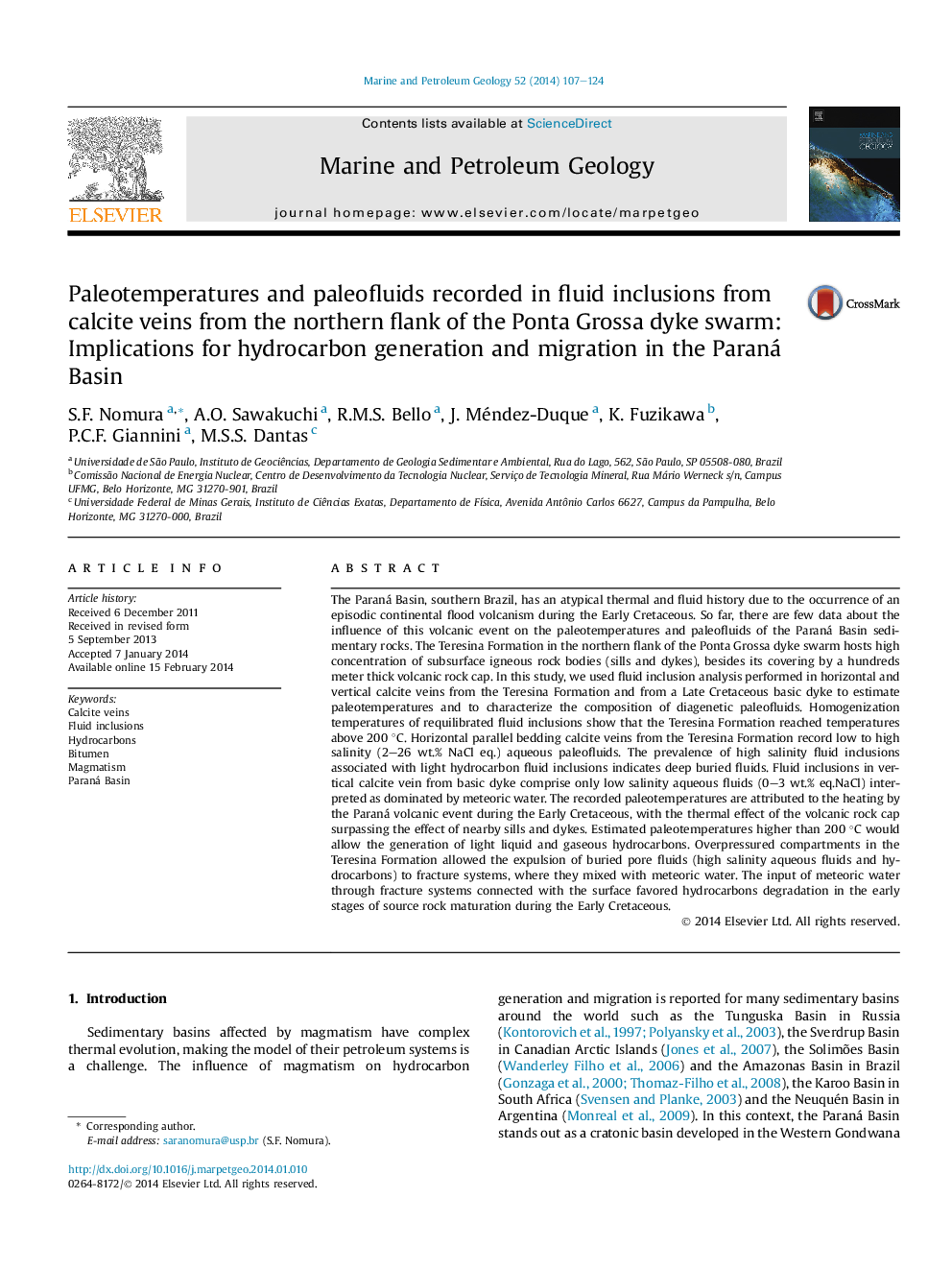| کد مقاله | کد نشریه | سال انتشار | مقاله انگلیسی | نسخه تمام متن |
|---|---|---|---|---|
| 6435472 | 1637172 | 2014 | 18 صفحه PDF | دانلود رایگان |

- Permian rocks heated by Early Cretaceous magmatism.
- Paleotemperatures and paleofluids studied through fluid inclusions in calcite veins.
- Expulsion of high salinity aqueous fluids and hydrocarbons.
- Input of low salinity aqueous fluids of meteoric origin through vertical fractures.
- Hydrocarbon generation due to the thermal effect of the basalt cap.
The Paraná Basin, southern Brazil, has an atypical thermal and fluid history due to the occurrence of an episodic continental flood volcanism during the Early Cretaceous. So far, there are few data about the influence of this volcanic event on the paleotemperatures and paleofluids of the Paraná Basin sedimentary rocks. The Teresina Formation in the northern flank of the Ponta Grossa dyke swarm hosts high concentration of subsurface igneous rock bodies (sills and dykes), besides its covering by a hundreds meter thick volcanic rock cap. In this study, we used fluid inclusion analysis performed in horizontal and vertical calcite veins from the Teresina Formation and from a Late Cretaceous basic dyke to estimate paleotemperatures and to characterize the composition of diagenetic paleofluids. Homogenization temperatures of requilibrated fluid inclusions show that the Teresina Formation reached temperatures above 200 °C. Horizontal parallel bedding calcite veins from the Teresina Formation record low to high salinity (2-26 wt.% NaCl eq.) aqueous paleofluids. The prevalence of high salinity fluid inclusions associated with light hydrocarbon fluid inclusions indicates deep buried fluids. Fluid inclusions in vertical calcite vein from basic dyke comprise only low salinity aqueous fluids (0-3 wt.% eq.NaCl) interpreted as dominated by meteoric water. The recorded paleotemperatures are attributed to the heating by the Paraná volcanic event during the Early Cretaceous, with the thermal effect of the volcanic rock cap surpassing the effect of nearby sills and dykes. Estimated paleotemperatures higher than 200 °C would allow the generation of light liquid and gaseous hydrocarbons. Overpressured compartments in the Teresina Formation allowed the expulsion of buried pore fluids (high salinity aqueous fluids and hydrocarbons) to fracture systems, where they mixed with meteoric water. The input of meteoric water through fracture systems connected with the surface favored hydrocarbons degradation in the early stages of source rock maturation during the Early Cretaceous.
Journal: Marine and Petroleum Geology - Volume 52, April 2014, Pages 107-124